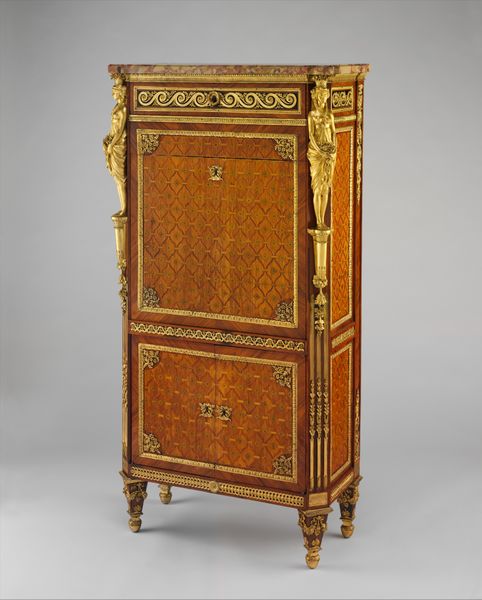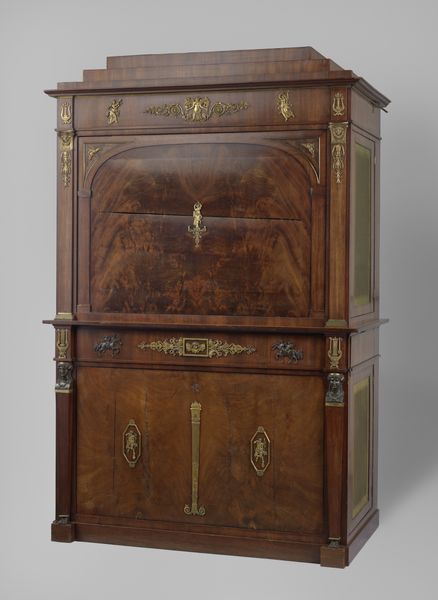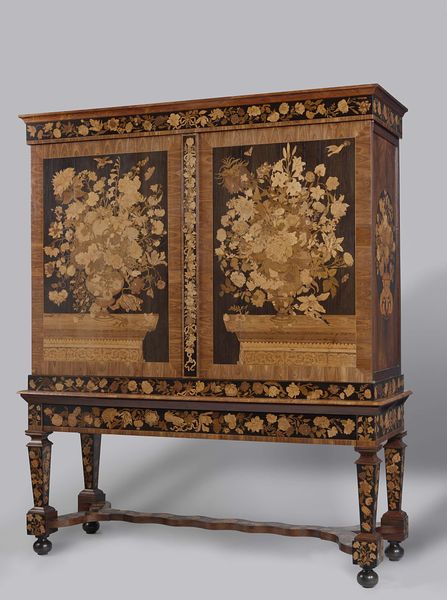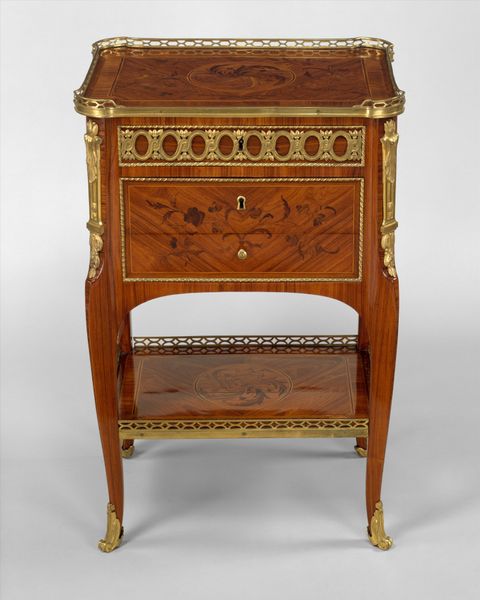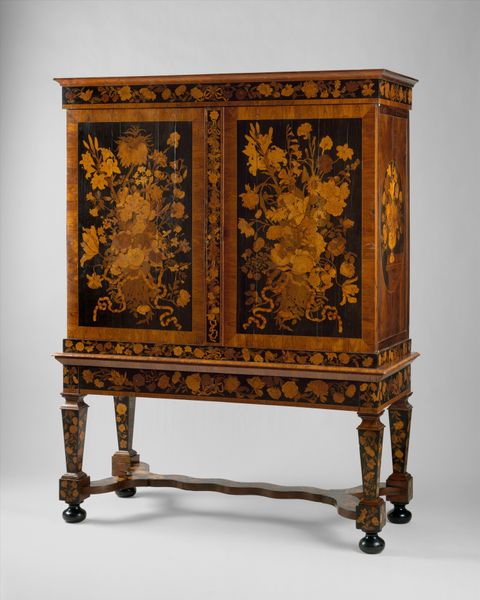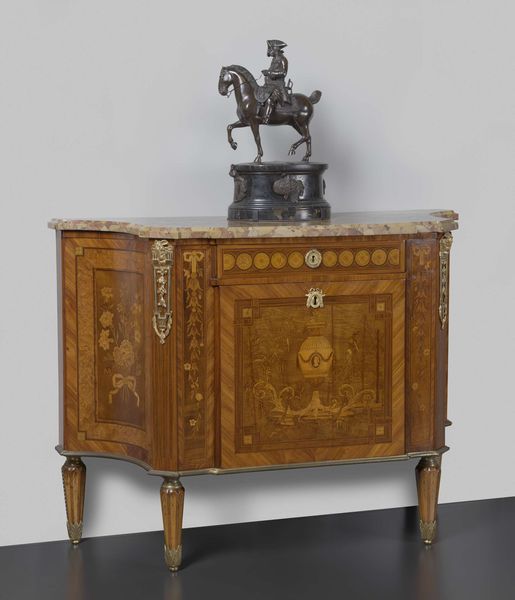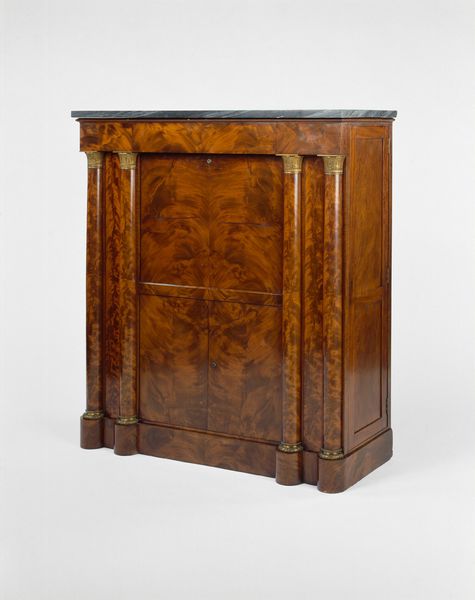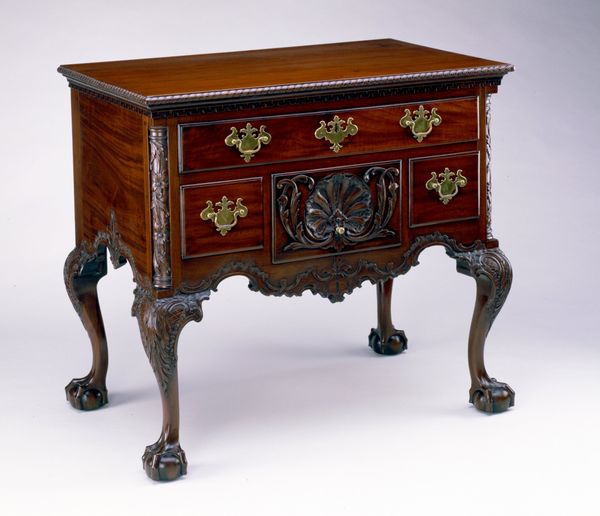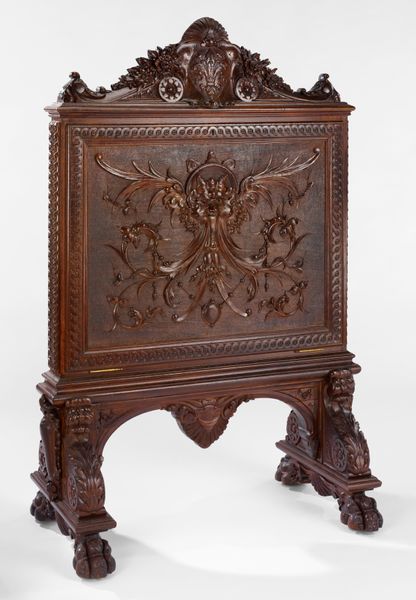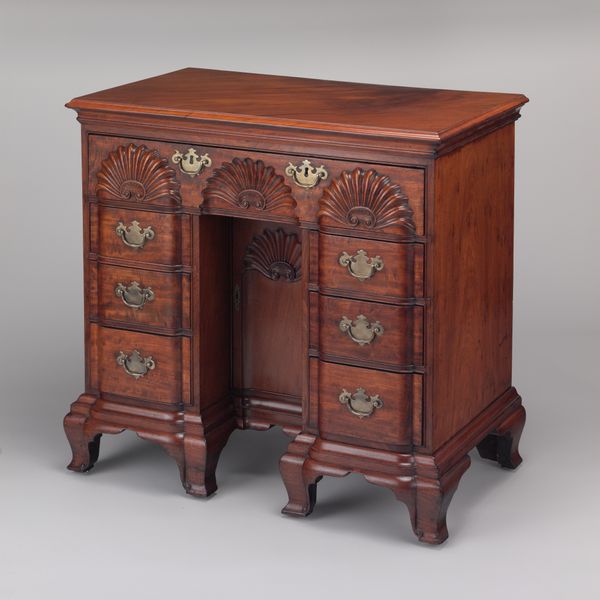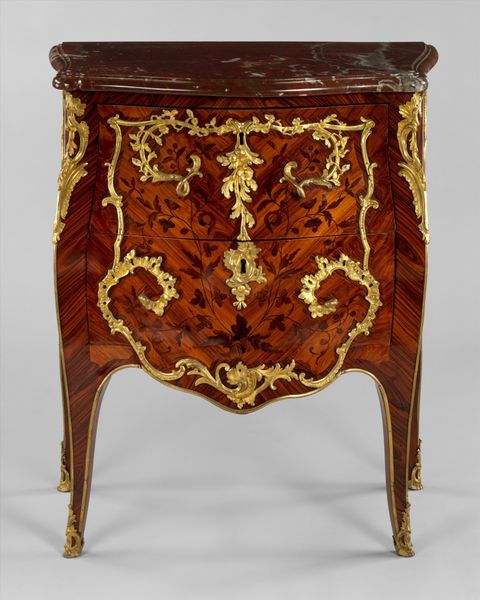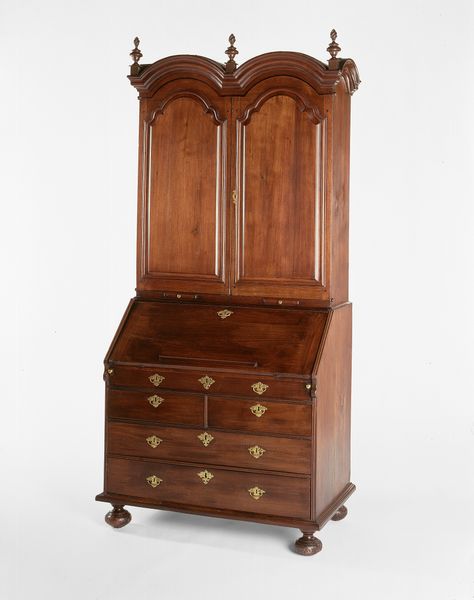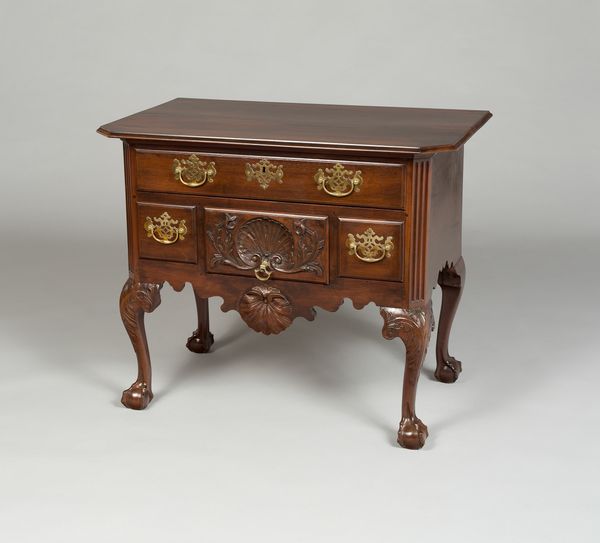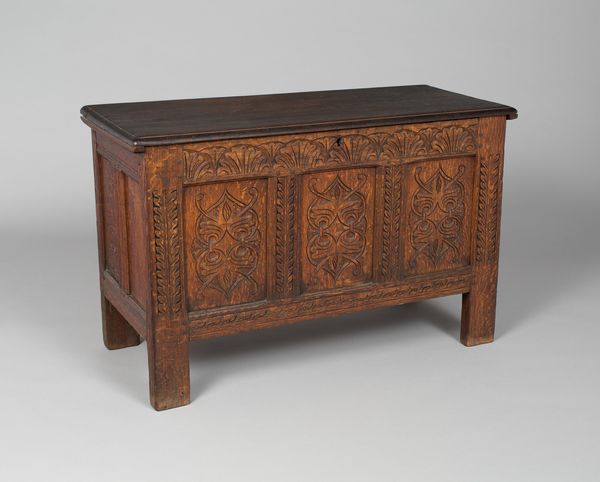
carving, wood
#
neoclacissism
#
carving
#
furniture
#
wood
#
decorative-art
Dimensions: height 148.5 cm, width 100 cm, depth 48 cm
Copyright: Rijks Museum: Open Domain
Curator: Our next piece is Friedrich Frickhinger’s “Secretary, commode and table” crafted around 1834. It's a magnificent example of decorative art. Editor: My initial reaction is one of restrained opulence. The dark wood contrasted with those creamy inlays…it has such formal, stately elegance, really. Curator: Absolutely. The piece blends Neoclassical elements with decorative art, showcasing remarkable carving skills and woodwork. Let’s consider the social context—luxury furniture like this signaled status. We can appreciate the intensive labor of the artisans involved, each carefully inlaid detail speaking to the value placed on craft production at the time. Editor: Indeed, and let's not forget the visual organization at play. Observe the two distinct panels. Above, the motif seems almost heraldic with stylized figures encircling what appears to be architectural details, all beautifully symmetric and carefully arranged. The balance draws the eye, holding it captive with the elegant complexity. Curator: The materiality of it really is striking. High-quality wood would have been a costly resource, reflecting consumption patterns of wealthy patrons. And think about the function too—it's a synthesis of a writing desk, a chest of drawers, and perhaps a serving table all in one. This combination points to a very specific kind of domestic life and spatial organization. Editor: From a purely formal viewpoint, the craftsman expertly balances contrasting colors and textures. The composition guides you upward; the inlays offer playful details, and the whole object creates visual harmony that is incredibly satisfying, irrespective of its historical significance. Curator: The social and economic value of high-end craft production and consumption comes together quite interestingly within it. Editor: And, after having had a better look, there is real beauty to be found simply in its structure and proportion.
Comments
rijksmuseum about 2 years ago
⋮
German-born Blechschmidt worked for leading Paris cabinetmakers and specialized in colourful marquetry (inlaid work) in various materials. He used an Italian Renaissance style for the marquetry here. Friedrich Frickhinger, one of his pupils and also a German active in Paris, made the furniture. He placed his signature and the date, 1834, on the inside of the secretary.
Join the conversation
Join millions of artists and users on Artera today and experience the ultimate creative platform.
